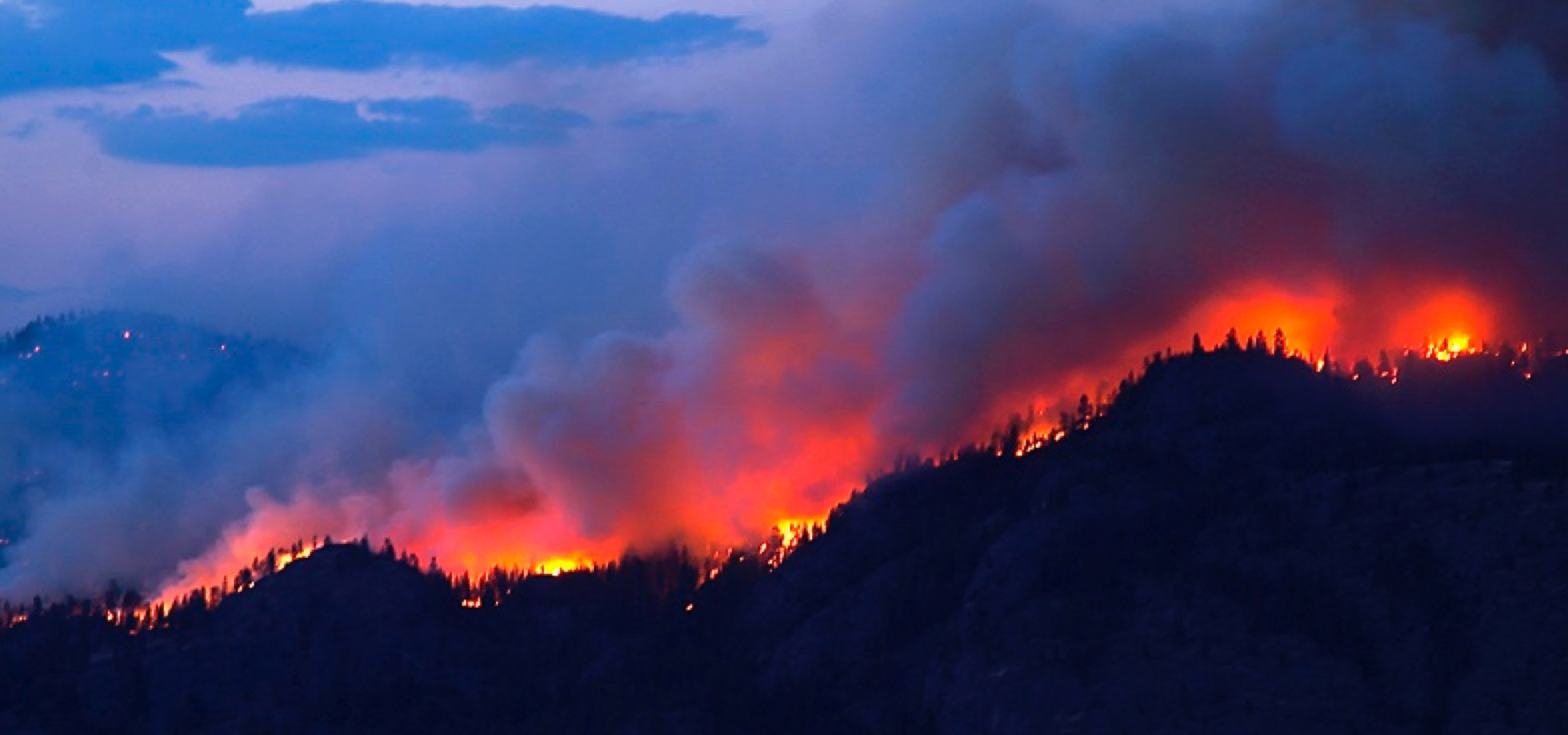Business fire prevention and safety should be of the upmost importance with unprecedented growth in wildfires. In fact, the past few years have seen both a dramatic acceleration in the frequency and intensity of wildfires around the globe. Whether it’s devastating bushfires in Australia, record rainforest fires in the Amazon or deadly wildfires throughout North America, there is no question that dryer, hotter conditions are putting people and property at greater risk than in previous decades.
In the United States, the wildfire environment continues to grow more destructive. Data from the National Oceanic and Atmospheric Association (NOAA) shows that 2018’s wildfire season burned nearly nine million acres, roughly 29 percent greater than the 10-year average. The total cost of those fires: $24 billion. In 2020, Oregon and Northern California saw unprecedented destruction and displacement due to raging wildfires.
In Canada, the situation is equally concerning. With about nine percent of the world’s forests, Canada sees nearly 8,000 wildfires each year. The average area burned in Canada is over six million acres per year. Fire suppression costs over the last decade in Canada have ranged from about $500 million to $1 billion each year.
“Fires are a natural part of the forest ecosystems in the U.S. and Canada, but they can be devastating to those located near a wildfire-prone zone,” said Joseph Poliafico, CSP, Vice President of Global Risk & Safety. “They pose a significant risk to communities and businesses located close to forests. Businesses throughout North America are at risk of damage from fast-moving wildfires, particularly those located in British Columbia and California.”
Adding to the wildfire threat is the number of fires routinely stretching the capacity of the local firefighters trying to contain them. And this year, the novel coronavirus is impacting how and how many firefighters are able to attack wildfires.
“Wildfire season can be treacherous during any given year, but with the added tension of the COVID-19 pandemic, extra precaution and preparation is critical,” Poliafico said. “The pandemic is forcing organizations to re-strategize how to respond and deal with wildfires. Firefighting departments and hospitals are strained for resources due to the COVID-19 situation, creating an additional roadblock for disaster response.”
FIRST ONSITE routinely works with businesses to help them recover from the effects of wildfires and other types of fire, including significant fire, smoke and water damage.
“Fire damage can be deceptively difficult to address because of the associated water damage that is often caused by fire suppression systems or firefighters battling the blaze,” Poliafico said. “We often provide a number of services to businesses affected by fire, including general contracting and reconstruction, temporary power or HVAC services, and remediating mold or other water-damaged property.”
With the threat of wildfires so great and the resulting damage so significant, businesses need to take every step possible to help protect their facilities from deadly and destructive wildfires through proper fire safety planning and prevention. What are some fire safety procedures used in business? Among the steps Poliafico recommends are:
- Create a 30-foot defensible space around your building. Fire needs fuel to burn. Clear away any combustible materials such as propane tanks, branches, leaves or brush.
- Install a fire suppression system. Insurance experts recognize suppression systems such as interior sprinkler systems as one of the best ways to fight the spread of a fire in a business. The National Fire Protection Association says sprinkler systems are 95 percent effective at dousing fires before they destroy a building when properly installed and maintained.
- Designate a safety officer. Designate an employee as your organization’s fire prevention officer. This person should be responsible for creating escape routes and offsite meeting places for employees, as well as keeping all company safety plans and equipment updated.
- Check your stairwells. Many businesses are stretched for adequate space, but you should avoid the temptation to store materials in your stairwells. Boxes or other materials stored in stairwells can quickly become both a fire and safety hazard.
- Make your roof fire-resistant and clear away gutter debris. Roofs constructed from non-flammable materials, such asphalt, metal, slate or tile, offer the best possible protection against fire. If replacing a wooden roof is not immediately possible, it can also be treated with fire retardant. Debris can easily ignite from sparks or embers, so keep your gutters clean. You can also screen them with metal mesh to reduce the amount of debris that can build up.
- Keep embers out. Any opening can allow sparks and embers to enter your building. Precautions include screening vents with wire mesh, protecting eaves with soffits and fascia made from fire-resistant materials and repairing any loose shingles.
- Remove close-by coniferous trees. Coniferous trees (with cones and needles) are extremely flammable, whereas deciduous (leafy) trees are naturally fire-resistant. Any coniferous tree within 30 feet of your property is a serious fire hazard. Beyond 30 feet, space out coniferous trees by at least 10 feet.
- Work with nearby businesses. If a nearby business property ignites, your property is under threat. It is important to make fire preparation a community activity, especially if you live in a densely populated area. Reach out to local businesses to see if they have a fire prevention plan in place and to align strategies.
- Stay aware of changes to your local fire code. Experts regularly update best practices to help protect buildings in wildfire zones, and municipalities will quickly update codes and recommendations to reflect that research. Watch your building code changes to identify additional steps you can take. You should strongly consider taking steps to meet updated code requirements even if you are grandfathered under a more-relaxed code.
- Ensure you have adequate insurance coverage. Check your insurance policy to ensure your business is sufficiently insured, and that your policy is up to date.
If you are a property owner looking for more workplace fire prevention tips and office fire safety, learn how we can help with our Fire & Smoke Restoration services.
